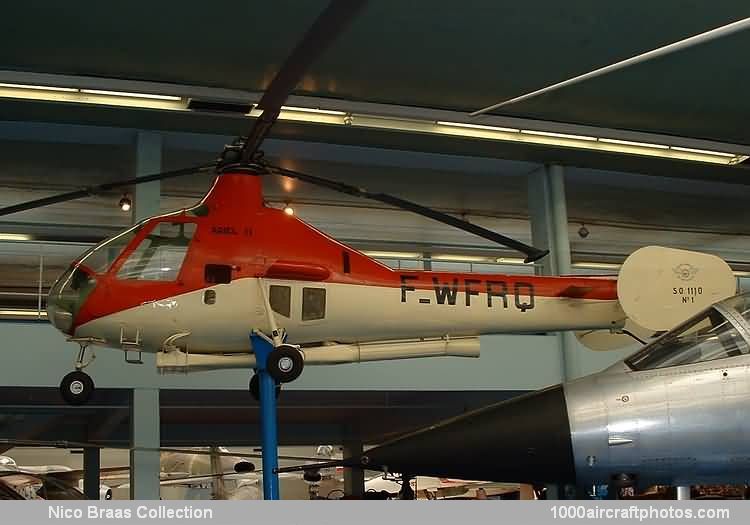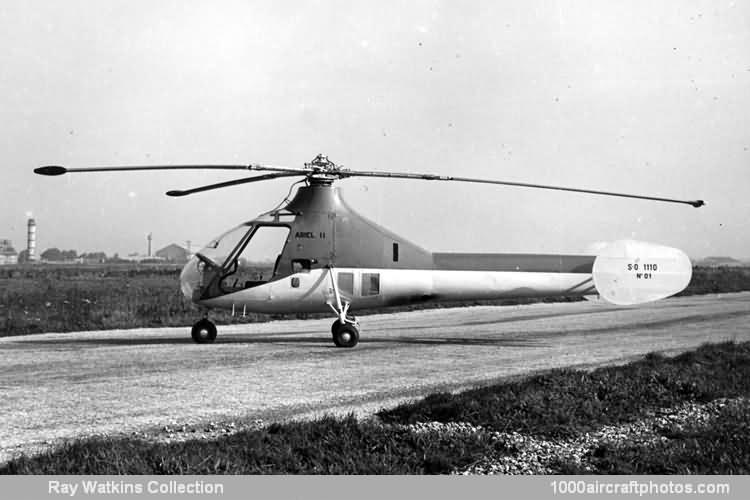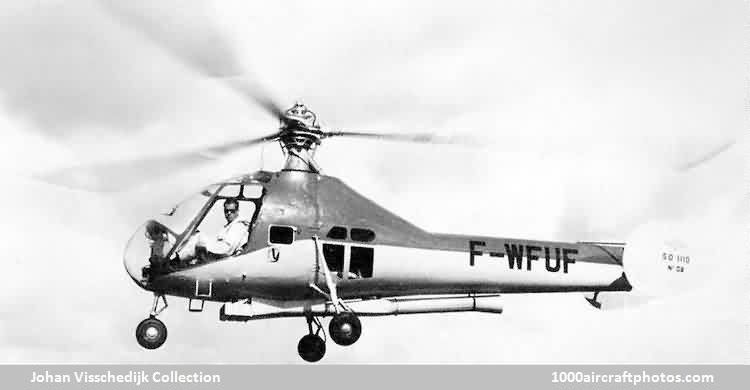Photographed at the Musée de l'Air et Espace, Le Bourget, Paris, France, source unknown
08/31/2012. Remarks by
Ray Watkins: "The sole
S.O. 1100 Ariel I prototype (F-WFKM) was modified to a pure helicopter configuration in several stages. The structural modifications initially involved the elimination of the rear propeller, the propeller shroud and the stub wings with its endplates. In their place a long hollow tail boom was fitted with a large vane placed at the end of the tube. A horizontal stabilizer, with endplates rotated 45° rearward relative to those on the Ariel I, was soon added.
(F-WFRQ) (
Ray Watkins Collection)
The first prototype of the S.O. 1110 Ariel II (F-WFRQ) no longer had the large underbelly housing which supported the rear landing gear units on the Ariel I, and the tail boom was deepened so that the bottom profile followed that of the cabin. The rear landing gear legs were now attached half way up the side of the engine bay and the rear stabilizer endplates were further rotated to the 90° position.
Power was provided by a 200 hp Mathis G8 air-cooled piston engine driving a Turboméca Arrius compressor, through several step-up gear boxes, which supplied a fuel-air mixture to the nozzles at the tips of the three main rotor blades. Cooling air from the engine was directed through the tail boom and used for directional control using a vane at the rear of the tube.
The first flight of the Ariel II took place on March 23, 1949. The mass of the drive system and continued cooling problems with the piston engine meant that the Ariel II was limited in its load carrying capacity. Fuel consumption was also about twice that of a mechanically powered helicopter.
(F-WFUF) (
Johan Visschedijk Collection)
The two prototypes, F-WFRQ c/n 1 and F-WFUF c/n 2 were the only aircraft of this type to be produced and F-WFRQ is now preserved at the Musee de l'Air."



